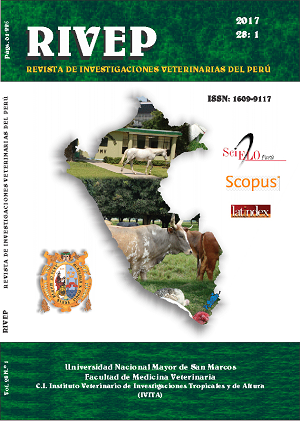Deep water, an effect on the temperature for the management of caligodosis in the Atlantic salmon (Salmon salar)
DOI:
https://doi.org/10.15381/rivep.v28i1.12938Keywords:
«snorkel» cages, temperature, Caligus rogercresseyiAbstract
Salmon farming is one of the pillars of the Chilean economy but due the emerging of many diseases, including the ecto-parasitism caused by Caligus rogercresseyi, the salmon industry has decreased their production indices. Based on that, alternative rearing systems are being evaluated for salmon cultivation, one of them fish farming in deep water, where the temperature is lower than the temperature of the surface, as C. rogercresseyi is a parasite whose life cycle is water temperature dependent. This paper describes the biological behaviour of the parasite and the effect of deep water and culture temperature on the establishment of the parasite in the host.Downloads
Downloads
Published
Issue
Section
License
Copyright (c) 2017 Roberto Riquelme, Pamela Olivares-Ferretti, Flery Fonseca-Salamanca, Jorge Parodi

This work is licensed under a Creative Commons Attribution-NonCommercial-ShareAlike 4.0 International License.
AUTHORS RETAIN THEIR RIGHTS:
a. Authors retain their trade mark rights and patent, and also on any process or procedure described in the article.
b. Authors retain their right to share, copy, distribute, perform and publicly communicate their article (eg, to place their article in an institutional repository or publish it in a book), with an acknowledgment of its initial publication in the Revista de Investigaciones Veterinarias del Perú (RIVEP).
c. Authors retain theirs right to make a subsequent publication of their work, to use the article or any part thereof (eg a compilation of his papers, lecture notes, thesis, or a book), always indicating the source of publication (the originator of the work, journal, volume, number and date).










